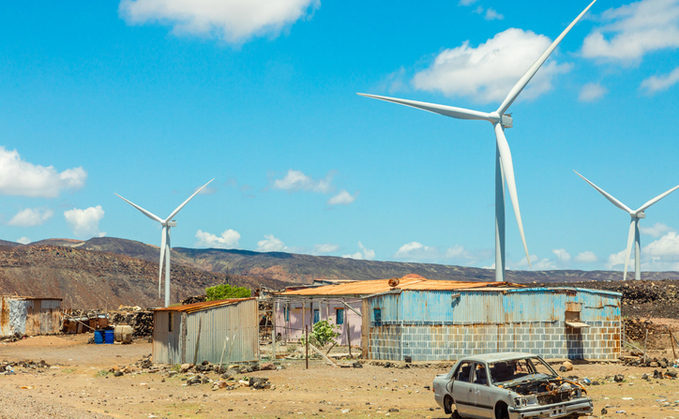📢 Heads-up: British International Investment pours £708 million into climate finance
In a major move toward green growth, British International Investment (BII) has committed £708 million (≈ $903 million) to climate-focused projects in 2024. This astonishing figure represents a record high and accounts for 41% of the institution’s total commitments for the year. According to BII’s annual review, climate finance now makes up 26% of its overall portfolio, showcasing a dramatic shift from just 15% in 2020
Let’s explore what this means for climate finance, why it matters for taxpayers like you, and how BII is helping to shape a greener future.
1. 🔍 Why BII’s Move Matters
-
Aligning with global decarbonisation
BII’s surge in sustainable investment mirrors global trends: overall energy-transition investments hit $2.1 trillion in 2024, with renewable energy capturing $728 billion—8% growth year-on-year canarymedia.com. -
Boosting developing economies
Over 62% of BII’s climate finance flows to Africa (£1.09 billion), followed by £626 million to Asia and £29 million to projects spanning both continents -
Taxpayer-backed green impact
As the UK’s development finance institution, BII becomes a powerful vehicle for delivering UK aid via sustainable, market-driven paths.
2. 📊 Snapshot: BII’s Climate Finance by Region
| Region | 2024 Investment | % of Total Climate Finance |
|---|---|---|
| Africa | £1.09 billion | ~62% |
| Asia | £626 million | ~35% |
| Multi-region | £29 million | ~3% |
| Total | £708 million | 100% |
📈 Note: This mirrors BII’s total net assets rising to £9.9 billion from £8.5 billion in 2023, with profits rebounding to £213 million
3. 🌱 Where the Money Is Going
BII’s climate finance spans key categories:
-
Clean energy & renewables
Funding solar, wind, and hydro projects—contributing to a doubling in renewables commitments from $672 million in 2020 to $2.1 billion in 2024 -
Carbon projects
An innovative $4 million redirected to its first nature-based/off-setting carbon project, marking an important new direction -
Climate-adaptive infrastructure
Investments in clean cooking, smallholder farming, and energy access initiatives have also expanded—features highlighted in interviews with BII’s leadership
4. 🌍 Real Impacts & Taxpayer Benefits
The outcomes are tangible and powerful:
-
Emissions cuts
Energy investments made in 2023 alone avoided 1.5 million tons of CO₂ equivalent—a 54% increase versus the previous year sustainabletimes.co.uk. -
Scaling local economies
African and Asian communities benefit from sustainable power, jobs, and long-term infrastructure—for less than the cost of traditional aid. -
Crowding-in private capital
Public‑sector seed funding helps attract private investors into green ventures, boosting economic resilience in high-potential regions
5. ✅ Key Drivers Behind BII’s Strategy
-
Paris alignment
Commitments comply with Paris Agreement goals, though fossil‑fuel phase‑out still underway—public exposure to gas projects has dropped 39% since 2020 carbonbrief.org. -
UK green policy
The UK’s determined pivot to net‑zero is catalysing institutions like BII to scale clean investments—also aided recently by Alok Sharma’s leadership of the Transition Finance Council -
Global leadership in DFI space
As a premier UK Development Finance Institution, BII leverages public funds to lead in climate mitigation across emerging markets.
6. ⚠️ Challenges & Criticisms
While impressive, BII faces critique:
-
Remaining fossil-fuel assets
Critics highlight continued disbursements to gas projects under pre‑2020 contracts—even as new fossil investments dropped bii.co.uk+11thetimes.co.uk+11en.wikipedia.org+11bii.co.uk+11carbonbrief.org+11bii.co.uk+11. -
Slower exits
NGOs argue BII must speed up the retirement of legacy fossil assets to align fully with climate goals. -
Scale needed
Although £708 million is substantial, it's a small fraction compared to the trillions needed annually to hit net‑zero targets by 2050
7. 💡 Practical Takeaways for Readers
For readers and DIY investors inspired by BII’s direction:
-
Spot growth areas: Renewable energy in Africa and Asia is booming—consider green mutual funds or ETFs with global exposure.
-
Engage with DFI-backed listings: Public-private projects seeded by DFIs may go public—monitor BII partner firms.
-
Support carbon-project finance: Watch for voluntary carbon-standard credits emerging from BII-backed nature‑based initiatives.
-
Champion climate-conscious investing: Whether via IFAs or ESG mutual funds, push portfolios toward net-zero-aligned outcomes.
🏁 Conclusion
BII’s unmatched £708 million climate commitment in 2024 signals a bold pivot to sustainable investment, especially in developing regions. It offers a model for climate‑smart finance, with real-world carbon reductions, economic uplift, and growing private-sector involvement. While challenges remain—especially exiting fossil assets quickly—the momentum and strategy are clear.
For taxpayers and readers of Manika TaxWise, this underscores how UK-backed financing can drive meaningful green impact globally—and offers a roadmap for aligning your money with climate-positive opportunities.
❓ FAQs
1. What is BII?
British International Investment (formerly CDC Group) is the UK’s development finance institution, funding private-sector projects in Africa, Asia, and the Caribbean.
2. How much was invested in fossil fuels?
While BII committed no new fossil deals post‑2020, it continues disbursing earlier gas project commitments. By end‑2024, fossil asset exposure fell 39% since 2020
3. What is climate finance?
It refers to funding for projects that reduce emissions, build resilience, or generate sustainable clean energy.
4. How does BII fund carbon projects?
In 2024, BII committed $4 million to its first nature‑based carbon offset initiative carbon-pulse.com.
5. How to invest similarly?
Consider green funds/ETFs, carbon credit platforms, or climate‑aligned equities inspired by DFI projects.
Keywords: BII climate finance 2024, British International Investment £708m, climate investment UK DFI, Manika TaxWise climate impact, Africa renewable investment


